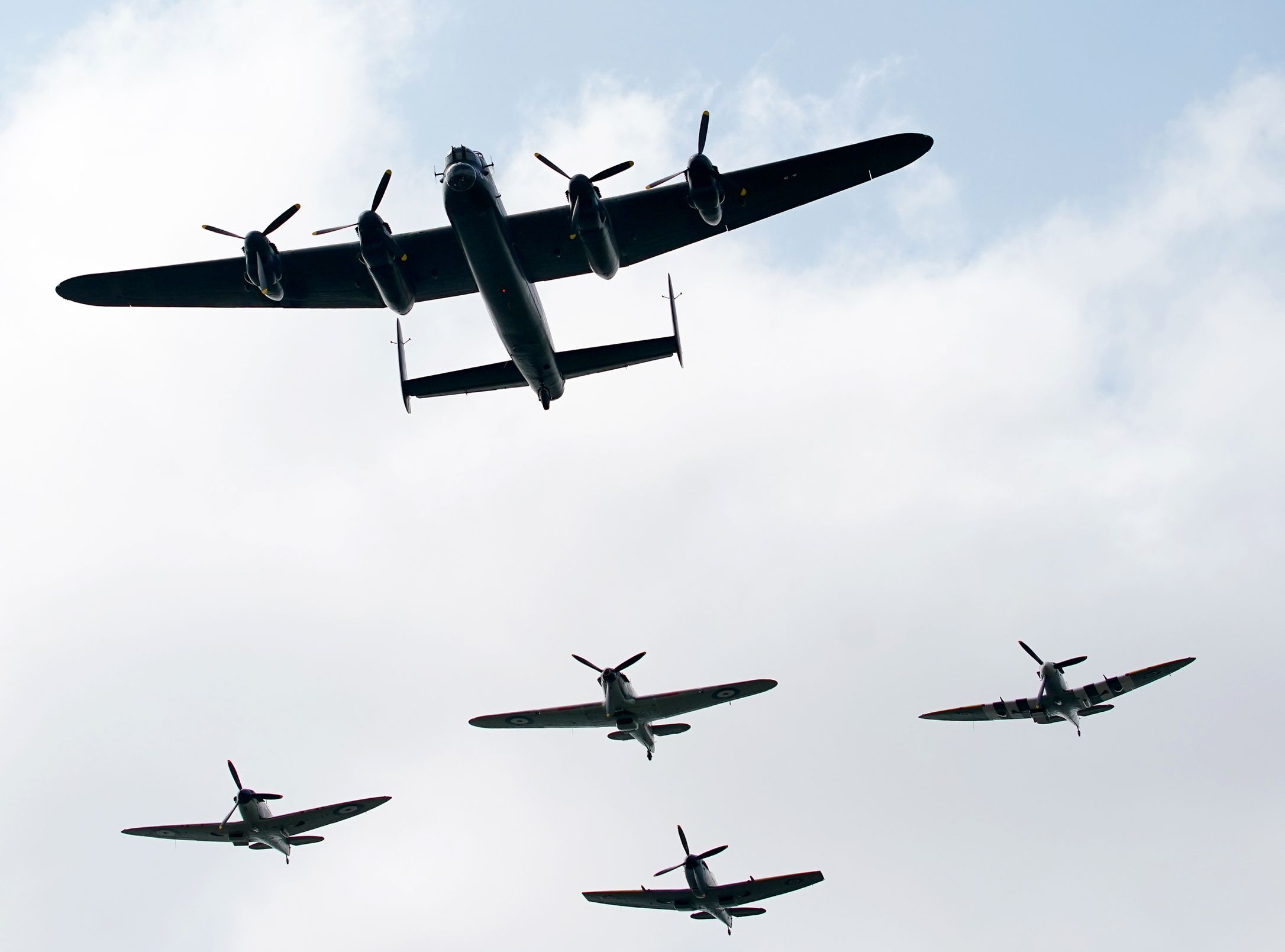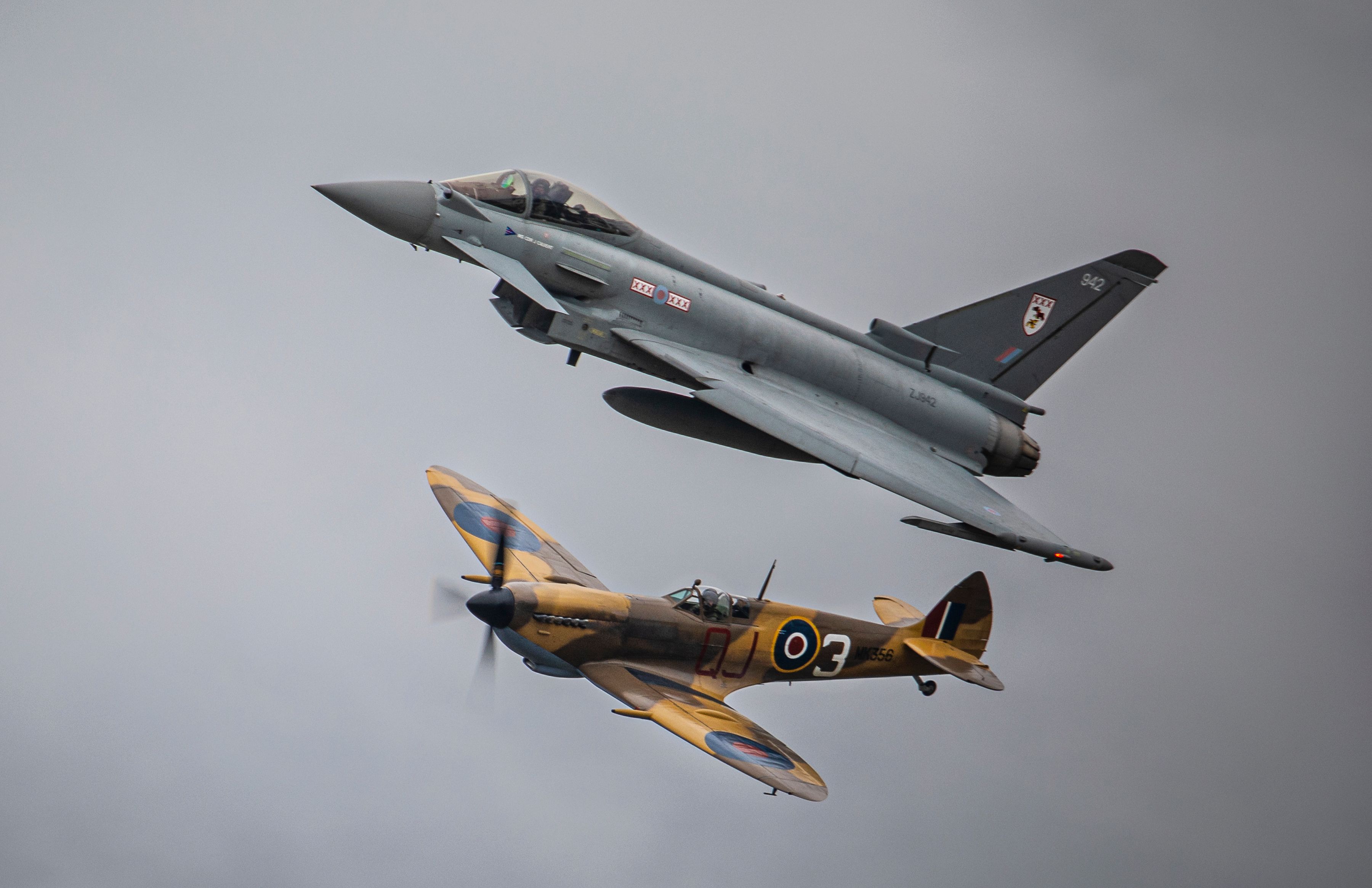Summary
- Investigating the Spitfire LF.IXe crash led to grounding BBMF’s WWII warbirds for safety.
- Civil Aviation Authority monitoring crash probe but hasn’t grounded civilian Spitfires.
- RAF BBMF paused flights after first fatal crash in 67 years, aiming to resume with safety modifications.
The United Kingdom’s Royal Air Force
(RAF) is nearing a decision point about the future of her World War II flying warbird collection in the Battle of Britain Memorial Flight (BBMF). Although many hope the Royal Air Force will return to airshows and flypasts the Hurricanes, Spitfires, Chipmunk trainer, Dakota transport, and Lancaster bomber, the fatal crash on May 25 of the Supermarine Spitfire LF.IXe, on hand, has led to British questions about the viability of flying World War II warbirds.
Spitfire LF.IXe Crash Currently Under Investigation
The 1944 Supermarine Spitfire LF.IXe, MK356, which crashed on May 25 and took the life of Squadron Leader Mark Long, has initiated an investigation by the Defence Accident Investigation Branch (DAIB). The Defence Accident Investigation Branch is the lead British Ministry of Defence crash investigation firm.
In an RAF statement shared with the BBC and published on May 27,
“Following the tragic accident at RAF Coningsby, and while the formal investigation is ongoing, the RAF has instigated a temporary pause in flying for the Battle of Britain Memorial Flight [BBMF].”
112 days after the crash, the investigation is ongoing. It is worth noting that the DAIB recommends as criteria to report to the DAIB not just “the death or serious injury of a Service person or a civilian” and/or serious aircraft damage but also “the potential impact on Departmental reputation” – meaning the UK Department of Defence. This helps explain the caution sought to return the full BBMF to flight.
Simple Flying also covered the crash, noting the lost Spitfire was MK356 – a genuine D-Day veteran who is confirmed to have shot down one enemy aircraft on 7 June 1944 (D-Day+1). The shootdown was a confirmed kill by Flying Officer Gordon Ockenden, Royal Canadian Air Force, against a German Me Bf109.:
Her last flight was in a livery intended to represent a Spitfire Mk IX of 92 Squadron in Tunisia during the North African campaign of 1943. See, the Battle of Britain Memorial Flight is intended to honor all of the Royal Air Force’s contributions to winning World War II.
With that, another UK governmental body has taken a sustained interest. This governmental body regulates many parts of UK aviation, including airshows and warbird flying experiences.
Civil Aviation Authority response
See the Civil Aviation Authority (CAA) is keeping tabs on the investigation. Helps the CAA has regulatory authority over the UK’s privately owned warbirds, such as many UK civilian-owned Spitfires of all marks – reported to be around 40, including navalized Spitfires called Seafires. The CAA has not grounded the civilian Spitfire fleet as per a September 11 BBC report, where the CAA shared with the BBC that there is, “Insufficient evidence to justify a fleetwide grounding” of Spitfires.
As per above, one can still fly in a Spitfire. FlyASpitfire.com is still offering unique flight experiences with a trained Spitfire pilot helping out, and this lucky gentleman above had Anna Walker be his trained helper. Ms. Walker has also trained content creators, like Guy Martin who trained to replicate a dogfight in the Battle of Britain for BBC. However, the Royal Air Force has felt since July 11, 1957, a need to have a flying unit to fly World War II aircraft – and not just for movies plus television.
Battle of Britain Memorial Flight: “A Museum Without Walls”
The Battle of Britain Memorial Flight, or BBMF, was first called the RAF Historic Aircraft Flight, but in 1969, it got its current name. Helps the war film Battle of Britain using actual warbirds and models of warbirds to put the story of the 1940 air battle on the silver screen came out that year:
Until the Battle of Britain, the Nazi German war machine had kept rolling over Europe. But the Royal Air Force hung on and bested the Nazi German Luftwaffe for many reasons. One can read more about the Battle of Britain’s aircraft.
Today, the BBMF when cleared to fly are able to provide inspiring flypasts over historical commemorations, the Royal Family and actively participate in airshows. One example is the below “Synchro Pair” with a Eurofighter Typhoon:
Bottom Line: The BBMF has a clear mission as per their website;
“The mission of the RAF BBMF is to maintain the priceless artefacts [artifacts] of our national heritage in airworthy condition in order to commemorate those who have fallen in the service of this country. The RAF BBMF also serves to promote the modern day Air Force and to inspire the future generations.”
However, the May 25 crash was the first fatal crash for the Battle of Britain Memorial Flight in the 67 years of the organization. The grounding of the BBMF’s Spitfires and Hurricanes will hopefully end after adjustments for increased safety, and history can live on in “a museum without walls”. Alternatively, of course, the surviving aircraft can be gifted to different museums to serve in a static or flying role – hopefully flying with private operators.


